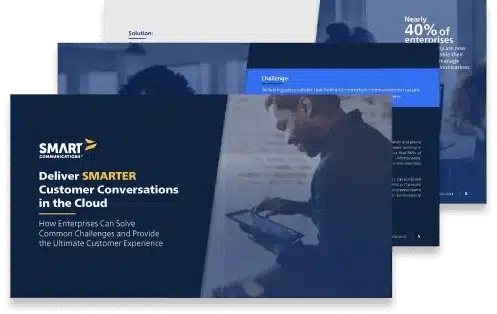“Show Me You Know Me”: Reimagining Claims Innovation in Insurance

By Smart Communications
Recently, we had the opportunity to attend one of APAC’s most forward-looking insurance events, where leaders from across the region gathered to discuss the future of the industry.
One of the most compelling sessions featured Nick Smith, Vice President and General Manager of Asia Pacific at Smart Communications, on a panel about-claims innovation—a topic that continues to shape how insurers build trust and deliver value in moments that matter most.
Nick’s message was clear:- Claims are the moment of truth-in insurance. They’re often the only meaningful interaction customers have with their insurer, and how that moment is handled can either deepen trust or erode it entirely.
Trust Begins with Recognition
In a low-touch industry like insurance, customers rarely interact with their provider — until something goes wrong. And when it does, they’re often in a highly emotional, vulnerable state. Nick’s phrase,-“Show me you know me,”-captured the essence of what customers expect in these moments: recognition, empathy, and simplicity.
Every barrier placed in front of a customer—whether it’s repeating information, switching channels, or starting the journey over—adds frustration. Instead, insurers must:
- Surface relevant information instantly, so customers don’t have to re-explain their situation.
- Communicate in the customer’s preferred channel, whether that’s WhatsApp, email, or phone.
- Make the journey simple and empathetic, removing friction and stress.
“Insurance is a trust business. And your customers will forgive you — if you show them you know them.” —Nick Smith
From a Claims Perspective: Timeliness, Personalisation, Relevance
Claims are not just transactions — they’re emotional experiences. And to truly innovate in this space, insurers must focus on four key pillars:
Timeliness
Customers expect fast, decisive action when they submit a claim. Delays not only increase anxiety but also erode trust. Having the right data at the right time enables faster adjudication and resolution, turning a stressful moment into a reassuring one.
1. Personalisation
Every customer’s situation is unique. Personalisation means recognising their history, preferences, and context — and tailoring the experience accordingly. It’s not just about automation; it’s about-humanising-the process where it matters most.
2. Relevance
Communication must be timely and meaningful. Irrelevant updates or generic messages can feel dismissive. Instead, insurers should deliver information that speaks directly to the customer’s situation, using insights to guide the conversation.
3. Meeting Customers Where They Are
Whether it’s WhatsApp in Cambodia or SMS in Sydney, insurers must engage customers in the channels they prefer. Forcing them to switch platforms or restart the journey creates friction. A seamless, omnichannel experience is no longer a nice-to-have — it’s a necessity.
The Role of Data: Building a Consistent, Bi-Directional Layer
One of the biggest challenges insurers face (especially those operating across multiple brands or jurisdictions) is managing fragmented data systems. Nick highlighted the importance of building a-consistent data collection layer-that spans the entire business.
This layer should:
- Be-bi-directional, updating as customers re-engage.
- Support both-underwriting and claims, with tailored data inputs for each.
- Simplify internal processes to present a-unified experience-to the customer.
It’s not about collecting more data — it’s about collecting the-right-data, at the-right-time, to deliver trusted, relevant experiences. And when done well, it enables insurers to move from being a-payer-to a-partner-— supporting customers not just when things go wrong, but throughout their health, life, and wellbeing journeys.
Conclusion: Innovation with Empathy
Claims innovation isn’t just about speed or technology. It’s about-empathy, relevance, and trust. By simplifying journeys, personalising experiences, and showing customers they’re known, insurers can transform moments of crisis into moments of connection.
As Nick reminded us,-“If they don’t know you, it’s already a breach of trust.”-The future of insurance lies in recognising customers, respecting their time, and meeting them where they are — with clarity, compassion, and consistency.



